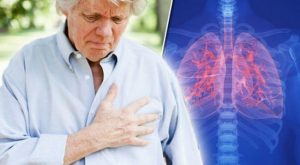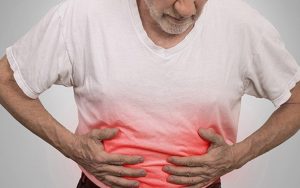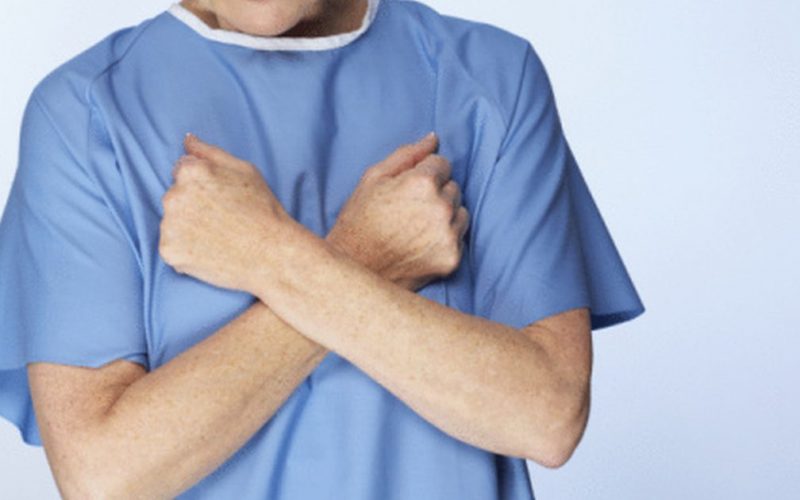Pain is experienced by every second patient of oncologists. 80% of patients with advanced forms of cancer report severe or moderate pain. Even after a complete cure, the pain syndrome can persist for a long time.
Why does cancer pain occur?
The causes of the pain syndrome can be direct tumor damage to pain receptors or nerves, therapeutic or diagnostic manipulations. Sometimes pain syndrome is not related to cancer or is caused by a combination of factors.
Doctors distinguish three main types of pain, depending on the factors caused:
Nociceptive. When any organ or tissue is damaged by chemical, mechanical, or temperature, pain receptors are irritated and an impulse from them is transmitted to the brain, causing a sensation of pain. Pain receptors are found in the skin and bones (somatic) and in internal organs (visceral). The organs of the abdominal cavity have only visceral innervation, without the somatic one. This leads to the appearance of “reflected pain” when there is a mixture of nerve fibers from the visceral and somatic organs at the level of the spinal cord and the cerebral cortex cannot clearly display pain. Therefore, a patient with abdominal pain in cancer is often unable to pinpoint the source of the pain and describe its nature.
Neuropathic pain occurs when the peripheral nervous system, spinal cord or brain is damaged, in particular, against the background of chemotherapy (for example, drugs containing vinca alkaloids) or due to the involvement of nerves or nerve plexuses in the tumor process.
Psychogenic. Sometimes a patient with cancer has no organic cause for pain, or the pain is disproportionately severe. In this case, it is important to consider the psychological component and understand that stress can increase the perception of pain.
What are the types of cancer pain?
There are the following types:
acute, occurs when tissue is damaged, and then decreases over time, as it heals. Full recovery takes 3-6 months.
chronic pain (lasting more than 1 month) is caused by permanent tissue damage. Psychological factors can influence the intensity of pain.
breakthrough pain is a sharp sudden increase in the intensity of chronic pain, which occurs when additional provoking factors are imposed (for example, back pain in spinal cancer with metastases can sharply increase (or occur) when the patient’s body position changes). Because of its unpredictability and variability, this pain is difficult to treat.
The nature of cancer pain can be persistent or episodic, i.e. emerging for a while.
Pain arising during the treatment of oncopathology
spasms, pain, itching, (side effects of many anticancer drugs)
inflammation of the mucous membranes (stomatitis, gingivitis, or ulcerative lesions in other parts of the digestive system) caused by chemotherapy or targeted therapy
pain, itching, tingling, redness, burning sensation in the palms and feet
joint and muscle pain throughout the body (while taking paclitaxel or aromatase inhibitors)
osteonecrosis of the jaw (a rare side reaction of bisphosphonates used for bone metastases)
pain due to radiation therapy (damage to the oral cavity and pharynx, dermatitis).
Is there always cancer pain?
Cancer without pain is possible at an early stage, when the tumor is so small that it does not irritate the receptors. Also, diseases without the formation of a solid tumor can proceed without pain, for example, myeloma to damage to the bones, leukemia.
Patient pain assessment
To help the patient as effectively as possible, you need to be able to assess the level of pain. The main reference point is considered a person’s sensations, while the doctor uses the following parameters:
What is the nature of the pain (aching, burning, baking, throbbing, sharp, etc.)?
Where is the pain felt most?
Duration of pain
Permanent or periodic?
At what time of day does it appear or intensify?
What makes the pain stronger or weaker?
Does the pain limit an activity?
How strong is she?
The simplest tool for assessing pain intensity is a numerical rating scale. There are ten grades in it: from 0 (no pain) to 10 (the most severe pain you can imagine). Grades from 1 to 3 correspond to mild pain, from 4 to 6 – moderate and from 7 to 10 – about severe. The patient himself evaluates his feelings in numbers and tells the doctor. This method is not suitable for children under 7 years of age and patients with disorders of higher nervous activity, very elderly people. In this case, the assessment is carried out according to other parameters, for example, on a scale of facial pain or using reports from relatives or other caregivers about the patient’s condition, about his response to pain relief.
In addition to medical reasons, it is important to take into account the peculiarities of the mentality. In some cultures, complaints of pain are perceived as a sign of weakness. Or patients do not want to burden other family members, since the opinion of relatives is very important. In addition to taking into account the psychological aspect, the doctor predicts how effective the treatment will be. Thus, neuropathic, breakthrough, and severe pain is more difficult to control. It is more difficult to treat if the patient’s history has had episodes of drug abuse, alcohol abuse, depression, mental impairment, or has already been treated for pain.
Why treat pain
Sometimes cancer patients are reluctant to take pain medication for fear of harming themselves even more. This is not the case, pain syndrome must be treated like any other pathological syndrome. Pain management can help:
sleep better
increase activity
increase appetite
reduce feelings of fear, irritation
improve sex life.
How to relieve, relieve cancer pain?
Pain in the head, legs, lower back, bones in cancer is treated according to a single step-by-step system:
1 step. Non-opioid analgesics. This can be paracetamol (acetaminophen), ibuprofen, ketoprofen, celecoxib, diclofenac, aspirin, ketorolac.
2nd stage. If there is no effect, then mild opioids (codeine) are used.
3 step. Potent opioids (morphine, fentanyl, oxycodone, tramadol) in a dosage sufficient to completely eliminate pain.
Additional medications are added at any stage to help the patient cope with anxiety and fear. These are usually anticonvulsants, antidepressants, local anesthetics. For pain resulting from inflammation, glucocorticosteroids are used, and for bone damage, bisphosphonates (pamidronate, zoledronic acid) and denosumab are used. The right medicine, in the right dosage and at the right time, makes it possible to help 80-90% of people. In other cases, other methods are used:
Brain surgery that interrupts the transmission of the pain impulse.
Chordotomy, i.e. intersection of the pathways in the spinal cord. It is used in case of a poor prognosis in a patient and severe pain syndrome that does not respond to drug treatment.
Percutaneous electrical stimulation of the nerve trunk.
Nerve blockade. To do this, the drug is injected either into the nerve trunk or into the tissues around it, which also interrupts the transmission of the pain impulse.
Radiofrequency ablation. With the help of radio waves, nerve fibers are heated to disrupt their functioning.
Palliative radiation therapy. It reduces the size of the tumor and reduces its effect on the nerve bundles.
Alternative methods that are commonly used in addition to traditional medicine. This can be meditation, acupuncture, chiropractic, hypnosis.
Pain in stage 4 cancer https://en.wikipedia.org/wiki/Cancer_staging does not occur immediately, so the patient and relatives can develop a plan of action in advance. To get an opioid, you need a healthcare professional. A prescription can be written:
oncologist
local therapist
a doctor of a narrow specialty who has been trained in working with narcotic substances.
A special prescription is valid for 15 days, if it is needed urgently, then it can be written out on holidays and weekends.
Currently, the patient or family does not need to return used patches, empty vials or drug packaging. The drugs are obtained in specialized pharmacies that have permission to dispense narcotic analgesics, poisonous and psychotropic substances. But if the area is remote and there is no pharmacy, then feldsher-obstetric points (FAPs) or outpatient clinics have the right to store and dispense opioids.
To get a recipe, there is a certain algorithm of actions:
The patient is examined by a doctor and a prescription is issued. This can be done at a polyclinic, an oncological dispensary, at home.
Then the patient or relatives put a round stamp on the prescription form at the hospital, this cannot be done at home.
The authorized person or the patient himself receives the drug in a specialized pharmacy according to the lists provided by the medical institution.
